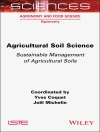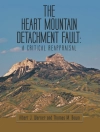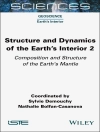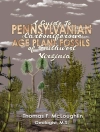This thesis presents geological, petrological, geochemical, and zircon U–Pb–Lu–Hf isotopic field data for representative Precambrian lithologies in the Western Liaoning-Northeastern Hebei Provinces along the northern margin of the North China Craton (NCC). It describes late Neoarchean (2.64–2.48 Ga) supracrustal metavolcanic rocks and granitoid gneisses; late Paleoproterozoic (1.72–1.68 Ga) Jianping alkaline plutons and Pinggu alkaline volcanic rocks; and newly discovered ~1.23 Ga mafic dykes. The nature of magma sources and genesis of each magmatic episode are investigated, and the Precambrian (~2.6–1.2 Ga) lithospheric mantle evolution and crust-mantle interaction processes are established for the first time –aspects that provide important constraints in our understanding of the Precambrian crustal evolution and geodynamic processes in the region studied.
Table des matières
Introduction.- Geological background.- Neoarchean basement rock assemblage, crust-mantle interactions and crustal evolution of Western Liaoning Province.- Paleo- to Mesoproterozoic magmatic rock assemblage and crust-mantle geodynamic processes.- Precambrian crustal evolution, lithospheric mantle evolution and crust-mantle geodynamics of Western Liaoning-Northwest Hebei Provinces.- Concluding remarks.
A propos de l’auteur
Wei Wang received his Ph.D in June 2014 from the Peking University. His doctoral thesis was nominated as the outstanding doctoral thesis in Peking University. He has gained various awards for the prominent research work, including National Lisiguang Outstanding Doctoral Student (2012, four students/year), and “Top Ten Academic doctoral students” of Peking University (2013).
Dr. Wang now works at the China University of Geosciences, Beijing as an Associate Professor. He focuses on two major aspects: (1) Archean continental crust formation and evolution as well as crust-mantle geodynamic processes; and (2) Proterozoic supercontinent reconstruction, and related magmatism and crust-mantle geodynamic processes.












